How to feed a picky eater child
Say Goodbye to Picky Eating!
Do you have a picky eater at home? If mealtimes are a struggle, try these tips to help your child develop better eating habits. You can use these tips for a child of any age. It’s never too late to start having a healthier and more enjoyable mealtime.
If you are not the only one who prepares food for your child, make sure all caregivers follow the same tips to get the best results. This includes babysitters, siblings and grandparents!
- WHAT food and drinks are served at meals and snacks. Make only one family meal. Do not offer your child other options or their favourite foods if they refuse the family meal. Plan healthy balanced meals using Canada’s Food Guide.
- WHEN food is served. Offer meals and snacks at the same time every day. Your child will learn when to expect food to be served and it will help them come to the table feeling hungry.
Your child is more likely to try new foods when they are hungry at mealtime.
- WHERE food is served. Children eat better when the family eats at the table together. Limit distractions, like screens, at mealtimes. If you need help planning meals, try our Family-Friendly One Week Sample Meal Plan.
- IF they are going to eat. Your child will eat if they are hungry. Don’t worry – your child won’t starve themself! If they are hungry they will eat even if their favourite foods are not in front of them.
- HOW MUCH they are going to eat. Trust that your child knows when they are hungry or full.
- Plan family mealtime. Eat meals at the table as a family. Do not offer food while your child is playing, watching television or walking around.
- Be a role model.
 Your child will eat better and be more willing to try new foods if they see others at the table eating the same foods. Family members, including older siblings are important role models for healthy eating.
Your child will eat better and be more willing to try new foods if they see others at the table eating the same foods. Family members, including older siblings are important role models for healthy eating. - Eat at regular times. Offer three meals and up to three snacks at regular times each day. Offer only water between meals and snacks. This will keep your child hydrated and will also make sure that they don’t fill up before mealtime.
- What if my child won’t eat? If your child refuses to eat at snack or mealtime, offer food only at the next scheduled time. Stick to this rule even when your child refuses supper and has to wait until breakfast. If children eat less at one meal, they will make up for it and eat more at the next meal.
- Promote happy mealtimes. Your child will eat better if they are enjoying mealtime. Children are more likely to have a happy mealtime if you don’t pressure them to eat.

- Avoid distractions. Meals and snacks should be served away from distractions like the television or computer. Mealtime is for eating and interacting with the family. Do not have toys at the table or on your child’s tray. Leave toys, books, television and music for playtime before or after meals.
- Prepare one meal for the family. Make sure you offer food in the correct texture and size of pieces for your child. Remember it is the parent or caregiver’s job to offer the food and it is your child’s decision whether they will eat or not. Your child will be more willing to try new foods if they know they will not get their favourite foods when they refuse dinner.
- Listen to your child. Trust that your child knows when they are hungry and full.
- Don’t pressure, praise, reward, trick or punish. Children who want to be independent will not eat well if they feel pressure. Allow your child to decide if or how much they will eat from the foods offered.
 Trust that they will eat if they are hungry.
Trust that they will eat if they are hungry. - Try, try again. Continue offering new foods even if your child has said no to them before. Offer these foods on different days, at different meals and in different recipes. It can take as many as 15 times for a child to try a food and like it. Don’t give up!
- Limit mealtime. Allow your child a maximum of 30 minutes to eat the meal. After this time, put the food away and let your child leave the table. Offer food again at the next scheduled meal or snack time. Extending mealtime too long will not make your child more likely to eat and does not create a healthy and happy eating environment.
Mini mushroom omelettes
Breakfast dumplings
Date and oatmeal pancakes
Super easy chicken parm
Baked potato medley
Green meatballs
Thai curry turkey
Energy balls
A dietitian will make sure your child is getting important nutrients like protein, fibre, iron and calcium that your child needs to grow and be healthy. Your dietitian will make suggestions on how to boost the nutrition of the foods they are already eating and give you a plan on how to introduce new ones. They can also help you plan balanced school lunches and help you with reading labels. Connect with a dietitian today!
Your dietitian will make suggestions on how to boost the nutrition of the foods they are already eating and give you a plan on how to introduce new ones. They can also help you plan balanced school lunches and help you with reading labels. Connect with a dietitian today!
Remember, it is the parent/caregiver’s job to decide which foods are offered, when they are offered and where they are offered. It is the child’s job to decide what to eat from what is offered and how much. If you follow the tips in this article, you should start to see improvements in your child’s picky eating over time. If you have tried all these tips and are still having difficulty, a dietitian can help.
You may also be interested in:
Picky eating: 10 fun tips to get kids to try new foods
Family-Friendly One-Week Sample Menu Plan
Cooking with Kids
What is a Dietitian?
This article was written and reviewed by dietitians from Dietitians of Canada.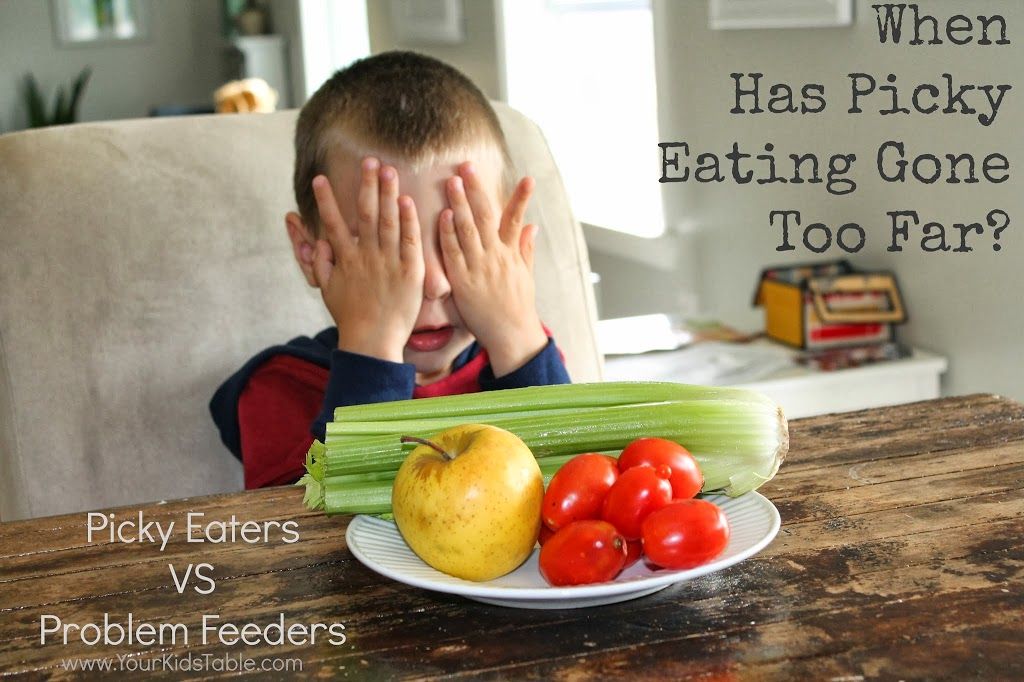 The advice in this article is intended as general information and should not replace advice given by your dietitian or healthcare provider.
The advice in this article is intended as general information and should not replace advice given by your dietitian or healthcare provider.
Last Update – October 28, 2022
Quick Tips to Feed a Picky Eater
Reviewed by Amita Shroff, MD on August 30, 2022
Your child may happily eat some foods and toss others on the floor. Is it just a phase, and how long will it last? What do you do in the meantime: Give them what they want, or hold your ground?
Don't turn mealtime into a battle of wills. Keep offering a variety of good-for-you foods, even if your kid rejects it at first. Many kids take their sweet time before deciding they like a new food after all, so keep trying. Offer fruit, vegetables, and even "grown-up" food, without pressure. Your child may surprise you with what they like.
Does your child say they hate asparagus, even though they've never tried it? It happens a lot. Many vegetables have a strong smell and taste, especially when cooked. Be patient. They may want to see it and smell it before they'll taste it, and even then they may spit it right back out. Take a breath and try it again another day.
Be patient. They may want to see it and smell it before they'll taste it, and even then they may spit it right back out. Take a breath and try it again another day.
Many children warm up to veggies when they've helped pick them out, whether at the store or at meals. If green veggies turn them off, try orange or red ones instead. Or offer them raw with a dip like ranch dressing or hummus. Although hiding vegetable purées in foods like baked goods or pasta sauce is a short-term fix, it doesn't teach them to like those veggies when they are out in the open.
Does your child drink so much milk or juice during the day that they are not hungry at mealtimes? It can be a problem if they drink so much it makes them miss meals.
For children ages 1 to 6, keep juice to 4 to 6 ounces a day. That's 1/2 to 3/4 of a cup. Avoid juice with added sugars. Water it down gradually until your child is drinking plain water. Or try serving milk or juice for meals and water the rest of the day. Your child should have about 2-2½ cups of milk a day. Remember that kids over 2 should be drinking 1% or skim milk.
Your child should have about 2-2½ cups of milk a day. Remember that kids over 2 should be drinking 1% or skim milk.
Does your child have a sweet tooth that won't quit? They insist on sugary cereal for breakfast. You open their lunchbox to find they have eaten the cookie and nothing else. At dinner, they beg for dessert right away.
These tips may help tame your child's sweet tooth:
- Offer snacks that are naturally sweet (low-fat yogurt, fruit, frozen bananas or grapes, apple slices with peanut butter).
- Don't keep many sweets in the house. If they're not around, they won't be tempted by them (and neither will you).
- Don't use sweets as a bribe or reward. Make them a small part of a balanced diet, rather than the big prize after your child has cleaned their plate.
Many kids snack so much all day that they're not hungry at mealtimes. Kids need to eat up to six times a day, including three meals and two or three snacks. So how do you keep them full and happy all day while making sure they save room for a healthy dinner?
Get your child on track by setting a time frame each day for meals and snacks.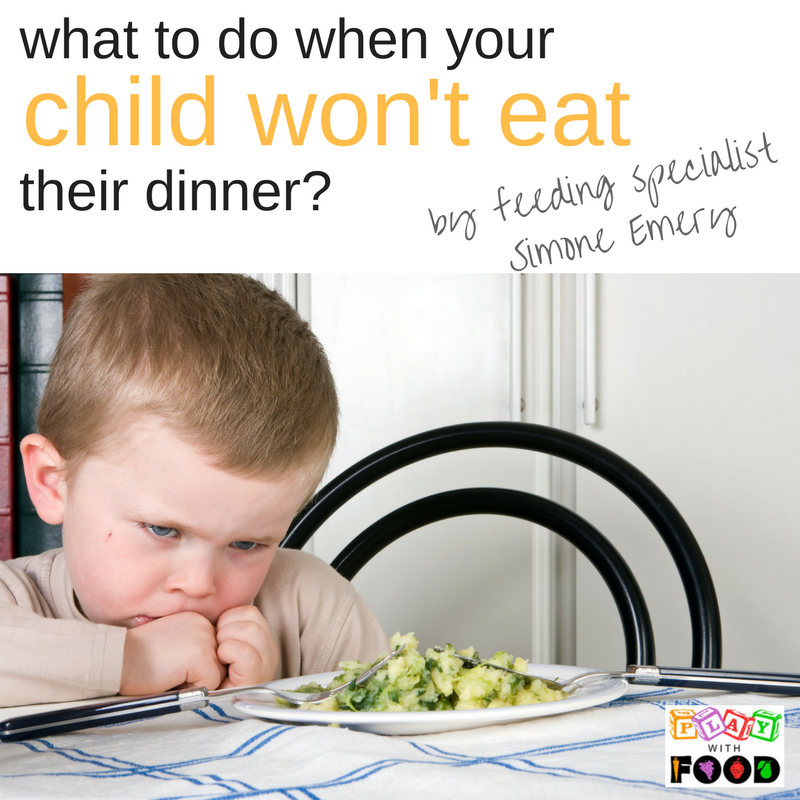 Your child may still skip a meal once in awhile, but if there's a schedule, they'll know when to expect the next meal. If your child wants a snack at another time, offer items like fruit, vegetables, yogurt, peanut butter, cereal, or half a sandwich.
Your child may still skip a meal once in awhile, but if there's a schedule, they'll know when to expect the next meal. If your child wants a snack at another time, offer items like fruit, vegetables, yogurt, peanut butter, cereal, or half a sandwich.
Many young children are picky eaters. Choosing when and what they'll eat is how they learn to be independent. Most develop healthy eating habits as they get older. If you think your child physically has trouble eating, talk with your pediatrician. Those cases are rare, and remember, the pickiness is probably just a phase.
If your child seems to live on nothing but three chicken nuggets a day, you might wonder if they need a lot more. But if they have plenty of energy and is growing at a healthy rate, they are probably OK. Still, it's a good idea to talk to your pediatrician. If your child isn't growing at the normal rate for their age, you and your pediatrician should look into that.
Little tricks can sometimes encourage better eating.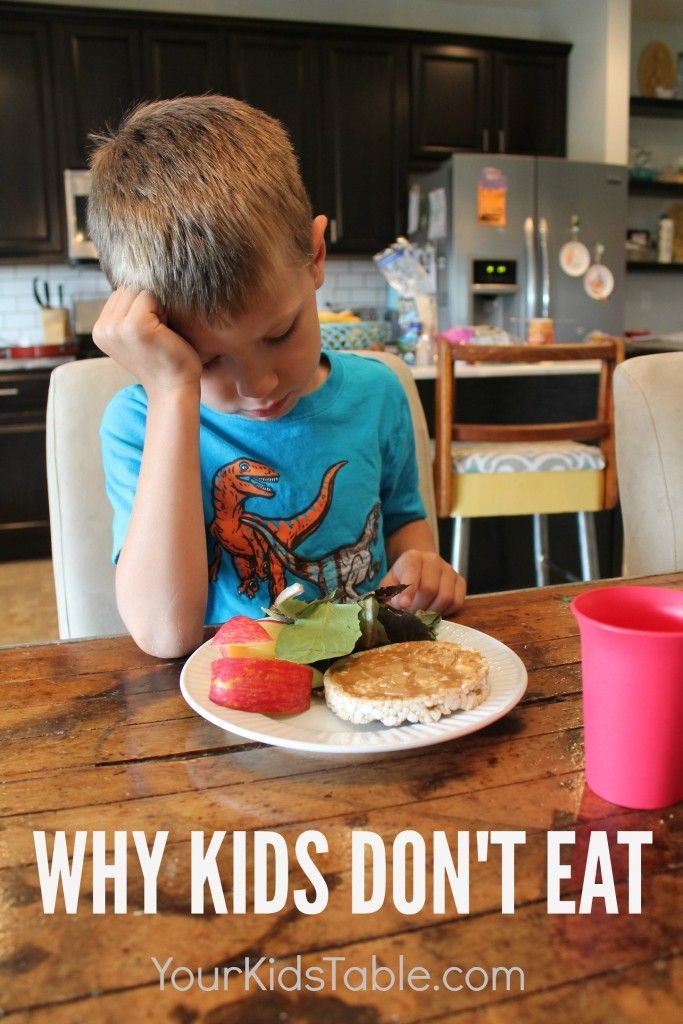 For instance, you could cut foods into fun shapes using cookie cutters. Turn mealtime into a game to see who can "eat all their colors." Or try an at-home picnic for a change of scenery. Keep the mood happy and upbeat by talking about fun topics.
For instance, you could cut foods into fun shapes using cookie cutters. Turn mealtime into a game to see who can "eat all their colors." Or try an at-home picnic for a change of scenery. Keep the mood happy and upbeat by talking about fun topics.
"If you eat all your broccoli, you can have some ice cream." Don't go there. Bribing is shortsighted, and it backfires. It can teach your child to value treats more than other foods and to please you through food. Take the focus off dessert, don't use it as a reward.
Just because they have turned up their nose at zucchini the last five times you've served it, don't give up. Most children will try a new food after it has been offered 10 to 15 times. When introducing new foods, keep portions small, and when you offer something new, also serve a food you know they love.
Resist the temptation to prepare special meals just for your picky eater. Offer the same foods to the whole family, but try to make at least one thing that you know they like.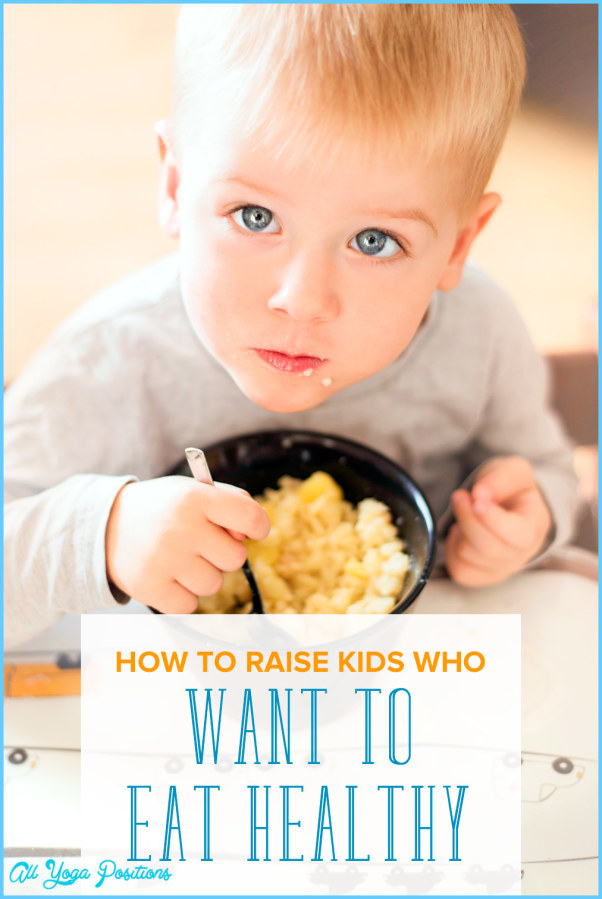 If someone in your family is an adventurous eater, apply a little positive peer pressure by seating them next to the picky eater.
If someone in your family is an adventurous eater, apply a little positive peer pressure by seating them next to the picky eater.
Kids who help prepare a meal are much more likely to eat it. Let your child help shell beans, roll out dough, wash lettuce, or other easy meal prep. They may give them a try once they are on their plate.
Bargaining with your child over food sets you up for a power struggle. Put the food in front of your child, and leave it up to them whether they eat it or not. Let them follow their own hunger cues.
Kids copy the adults in their lives. Are you modeling the kind of eating habits you want them to have? It's just like other things in parenting: Your child is looking to you, so let them see you walk your talk.
It's tempting to give in when they ask for an unhealthy snack. If it's not a rare treat, giving in may start to set a habit that's hard to break. Kids naturally love sweet and salty foods, just like the rest of us, and it's up to parents to offer choices that nourish and to keep treats as exceptions.
If your child is pushing food around on their plate, they may be full. Forcing them to keep eating can set them up for overeating and weight problems down the road. Offer child-sized portions of a variety of healthy foods, and let them decide when they've had enough.
Most children get over being picky eaters by the time they reach school age. In the meantime, take it in stride. Praise your child for what they are doing right at mealtimes, and don't make a big deal about picky behavior. The more you talk about it, the more likely they are to keep doing it. A nutritionist can help you cover your child's nutritional needs, too.
IMAGES PROVIDED BY:
(1) iStock
(2) Allen Donikowski/Flickr
(3) Corbis
(4) Keith Brofsky/UpperCut Images
(5) Kelly Sillaste/Flickr
(6) Lori Lee Miller/Photodisc
(7) Rich Reid/National Geographic
(8) Jamie Grill
(9) Patrick La Roque/First Light
(10) Mieke Dalle/Photographer's Choice
(11) Keiji Iwai/Photographer's Choice
(12) Kenji Hata/NEOVISION/Amana Images
(13) Vanessa Davies/Dorling Kindersley
(14) Lyn Walkerden/Flickr
(15) Stacy Gold/National Geographic
(16) R.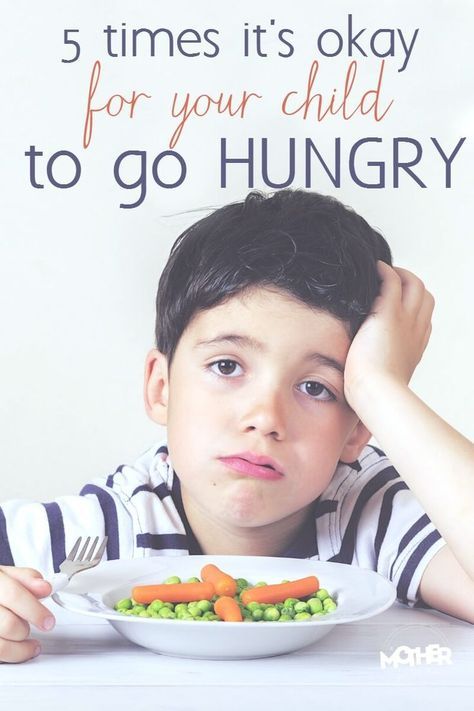 Nelson/Flickr
Nelson/Flickr
(17) Barbel Buchner
(18) 2A Images
(19) Maria Teijeiro/OJO Images
(20) Nick Daly/Cultura
(21) Purestock
(22) Thomas Northcutt/Digital Vision
SOURCES:
Autism-Help.org: "Eating and Feeding Issues."
Clemson Cooperative Extension: "Picky Eaters."
FamilyDoctor.org: "When Your Toddler Doesn't Want to Eat."
KidsHealth.org: "My Toddler Hates Vegetables. What Can I Do?" "Toddlers at the Table: Avoiding Power Struggles."
United States Department of Agriculture: "Make Food Fun for Picky Eaters."
USDA's Center for Nutrition Policy and Promotion: "Dietary Guidelines for Americans, 2010."
University of Michigan Health System: "Feeding Your Child and Teen."
ZeroToThree.org: "How to Handle Picky Eaters."
© 2022 WebMD, LLC. All rights reserved. View privacy policy and trust info
How to feed a picky child
The baby has a full plate of delicious food in front of him, and he wrinkles his nose: most mothers are familiar with this problem.
When a child does not eat, parents usually act in two ways: either they try to entertain him by telling him fairy tales and including cartoons, or they try to persuade (“Spoon for dad, spoon for mom”, “Until you eat soup, don’t you will receive"). But this doesn't always work either. What to do if the child refuses to eat?
Possible causes of poor appetite
Before taking action, you need to understand the reasons for the cool attitude to food.
1. Lack of appetite in children may be associated with poor health or with the onset of a disease - for example, a common cold. The body accumulates strength to fight infection and therefore tries not to waste its resources on digesting food. In this case, forcing the child to eat is not only useless, but also harmful - it is better to let him drink more liquid.
2. Sometimes the child does not want to eat due to digestive disorders: constipation, nausea or vomiting, abdominal pain and other symptoms do not contribute to a good appetite.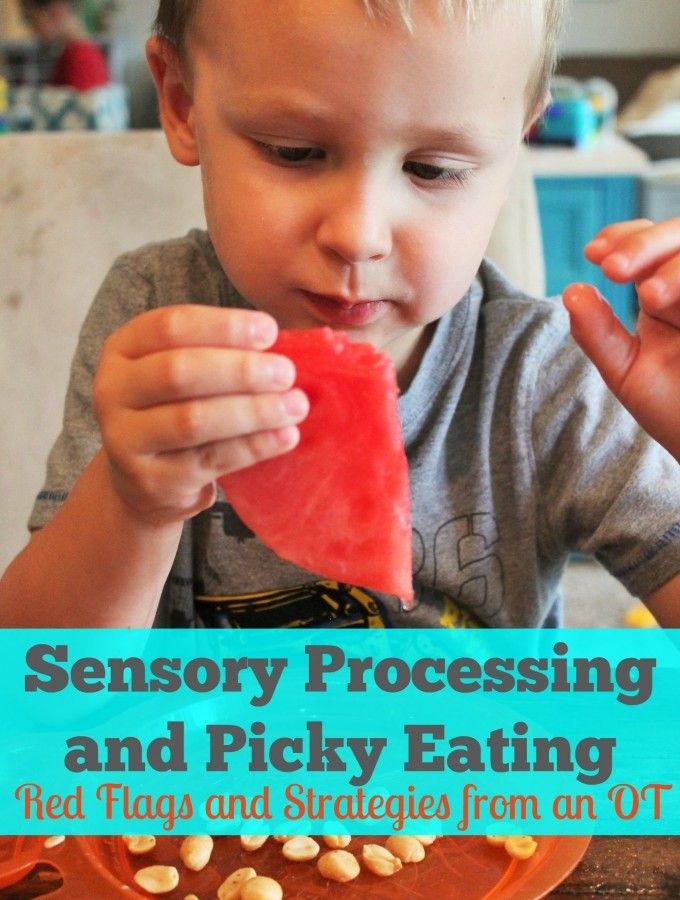
3. Some children refuse to eat when they are forced to do so, regardless of their taste preferences and whether they are actually hungry.
Remain calm
Mothers often find their child's refusal to eat too painful and become too active, creating a stressful situation around food. This can lead to both psychological and physiological problems in the child in the future, up to gastrointestinal disorders or even anorexia. Many parents panic, believing that the child is not getting enough nutrients. How much a baby should eat depends not only on his age, but also on individual characteristics. Therefore, first of all, do not worry and be guided by common sense: a healthy child will still eat when he is really hungry. If the baby's well-being is in doubt, consult a pediatrician.
Five Ways to Feed an Unwanted Child
1. First of all, do not force your child to eat. Neither persuasion, nor threats, and even more so punishment will not bring any benefit - on the contrary.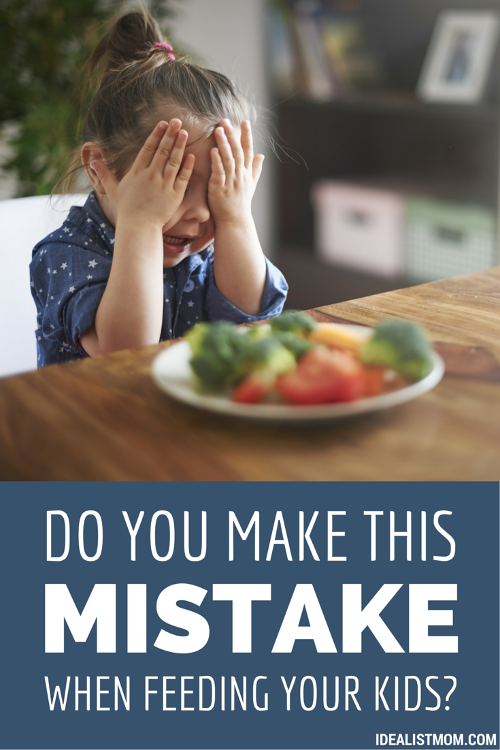 Set the plate aside and send the baby to do his own thing. The main thing is not to let your child snack between meals, and soon the appetite will make itself felt.
Set the plate aside and send the baby to do his own thing. The main thing is not to let your child snack between meals, and soon the appetite will make itself felt.
2. Involve your child in cooking: let him be not only a spectator, but also a participant in the process. Surely the baby will want to try the salad or porridge that he prepared himself.
3. Serve food interestingly. Connect your imagination and turn the most ordinary, everyday dish into a festive one. Even borscht (appetizing tomato-beetroot color and rich taste will be enjoyed by any mother with MAGGI ® Dressing for borscht seasoning) can be served in an unusual way - in a “plate” of a loaf of Borodino bread or a round rye bun.
Add a game element. Let potato mountains lie in a plate, rivers of sour cream sauce flow, and "spiky" meatballs grow along the banks. Draw eyes, nose and mouth on the cottage cheese casserole with jam - you get a funny face.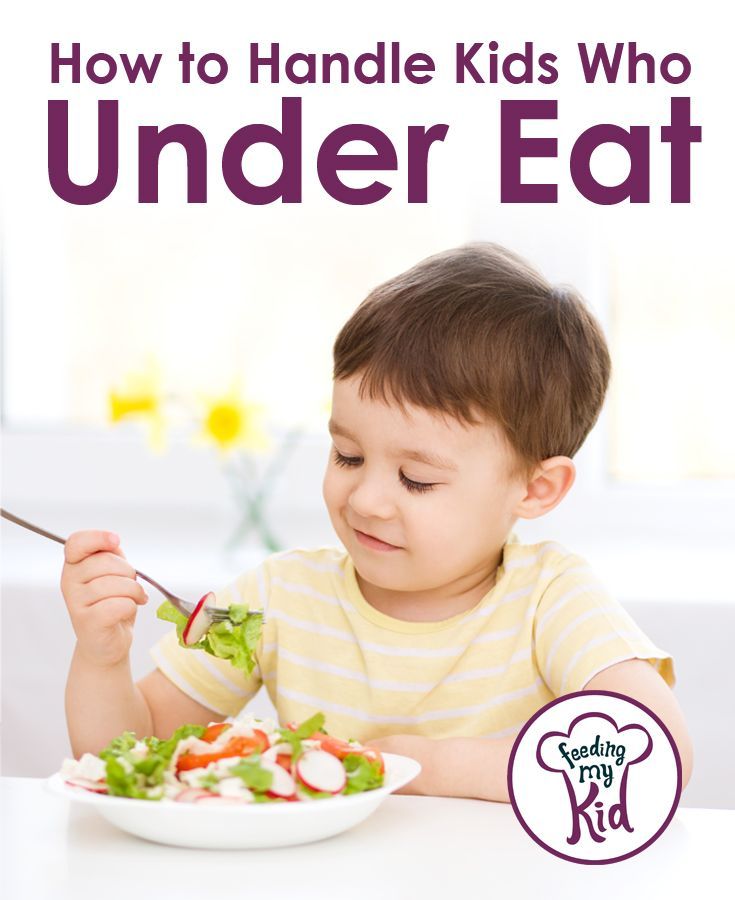 Make curly cheese sandwiches. Volumetric figures can be cut out of vegetables and fruits.
Make curly cheese sandwiches. Volumetric figures can be cut out of vegetables and fruits.
4. Ask for the child's opinion. Ask him what he would like to eat today and offer several options to choose from. The kid will be pleased to once again show independence.
5. If the child does not like a certain product, try disguising it. For example, almost all children do not like broccoli. One way to save the day is to make muffins with broccoli or “hide” shredded cabbage in spaghetti.
How and what to feed a child?
Good evening everyone! I beg your pardon for the long breaks, but summer is summer. For some reason, I have a lot more classes just in the summer. Today I will write about a topic familiar to all parents: how and what to feed a child. I will especially focus on the “how?” point.
We have our own house, so there is enough work both at home and on the street. Plus, the school holidays have begun, and I try to spend all my free time with the children.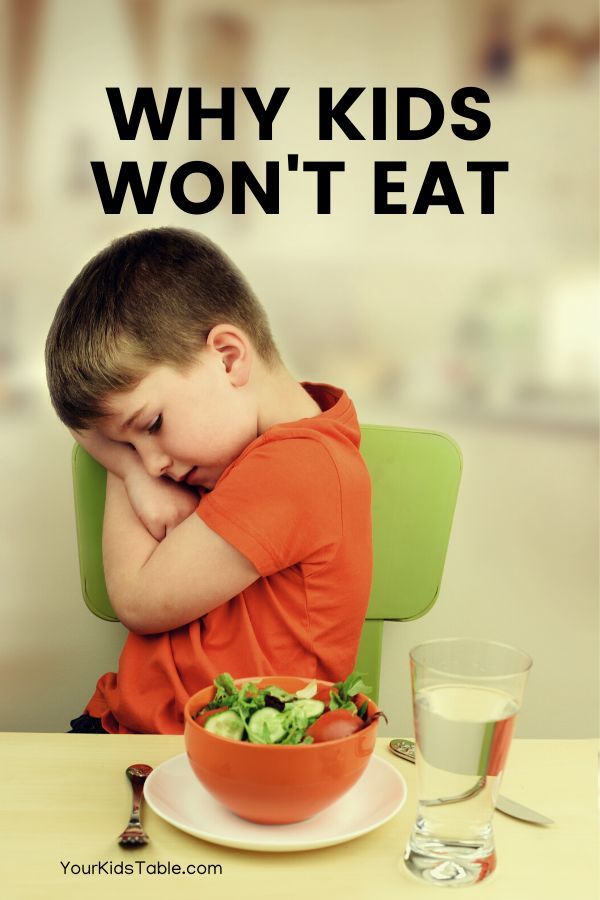 In this regard, writing a blog is not yet given to me every evening. How do you not want to just unsubscribe! I want to sit down and write sincerely, with meaning and interestingly.
In this regard, writing a blog is not yet given to me every evening. How do you not want to just unsubscribe! I want to sit down and write sincerely, with meaning and interestingly.
After all,
everyone understands that it is necessary to feed the child with the most useful.So that he grows strong, healthy, cheerful and cheerful. And everyone, of course, knows that the best food is vegetables and fruits, dairy products (?). I also remember that as a child I was always told: “Eat with bread” and “Bread is the head of everything.”
Is that true? The question is moot.
Now, with my knowledge, it seems to me that "eat with bread" comes clearly from our parents, who never had enough money for everything else that they eat with this bread. Especially in my hungry post-Soviet times with a complete lack of normal products in stores. (Maybe someone remembers the shelves of the butcher's shop filled with canned seaweed?). Therefore, we were taught to eat everything with bread.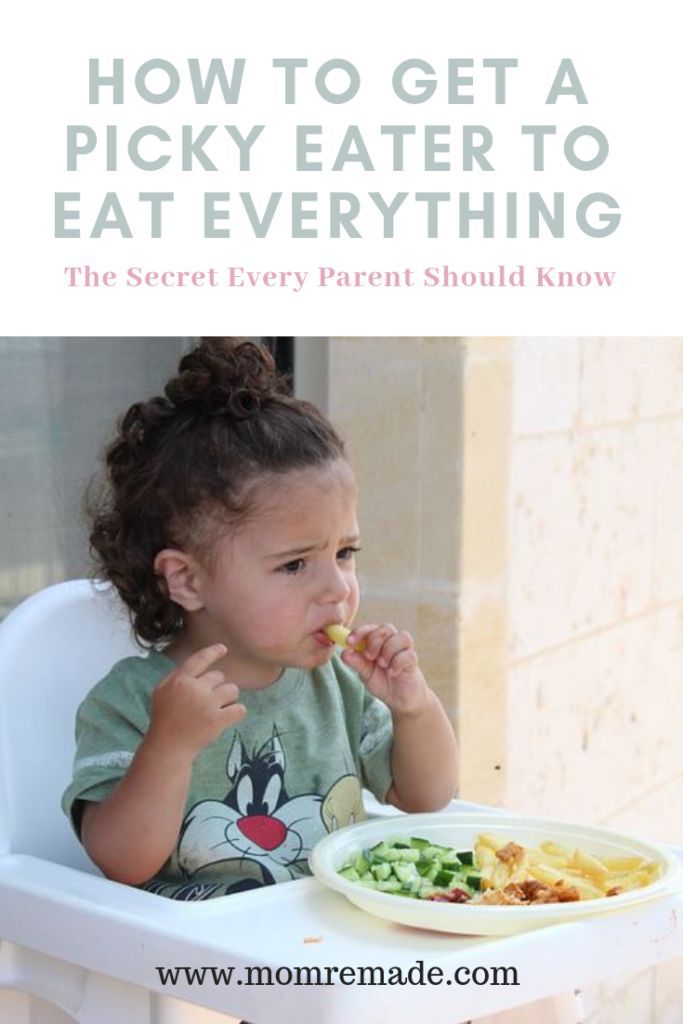 With him, and satisfying, and cheaper. True, I also remember the contradictory one: "sandwiches are not food." Although I do not quite understand - what's the difference! Soup with bread, or bread with cheese...?
With him, and satisfying, and cheaper. True, I also remember the contradictory one: "sandwiches are not food." Although I do not quite understand - what's the difference! Soup with bread, or bread with cheese...?
Personally I now have another completely opposite problem in Danish society: EVERYTHING is eaten with bread, or even bread alone. Bread for breakfast with something (cheese and milk as a bite!). Snack at school at 10-00 (sandwich). Lunch: black bread with something on top and vegetables. For dinner again something and again with bread. I still can't get used to this bread literally everywhere! I constantly forget that in addition to a side dish such as potatoes, rice and pasta, my Danish guests must also be given bread and butter for dinner ... There is so much bread everywhere that poor children have no room for anything else in their stomachs!
Don't get me wrong, I'm not against bread. But I am against his dominance. I am against this monotony.
Today, most likely, such a large topic will not fit in one post.

Therefore, I will share my observations. Probably, in addition to the monotony with bread, one of the main problems of modern parents is the monotonous nutrition of the child. Like my son (daughter) does not eat this, this and much more. But he eats ONLY this and that…
| Picky kids |
A familiar boy of 12 (!) years old, visiting his friends overnight, brings food with him! And, as you probably guessed, these are not vegetables and fruits. This is pasta in a creamy sauce with bacon. Just a masterpiece of "healthy eating" called "the death of a nutritionist."
Moreover, in the families where his friends live, they already know this very well, and they try as best they can: they offer to order pizza, or french fries and hamburgers, or make pasta themselves. It's inconvenient! The boy came to visit, but they couldn’t even feed him… At the same time, the boy has younger and older sisters in the family. And this boy's poor mother cooks 2 dinners every night. Pasta, described above, for the boy, and also dinner for all the other 4 members of the family ... At the same time, mom works at a normal job full time. Class! Sorry mom?
And this boy's poor mother cooks 2 dinners every night. Pasta, described above, for the boy, and also dinner for all the other 4 members of the family ... At the same time, mom works at a normal job full time. Class! Sorry mom?
No. I don't feel sorry for my mom at all. As cruel as it sounds, it's my mother's fault.
| What to feed the child? |
Another girl: my daughter's friend. 7 years. For breakfast, lunch and snacks at school, he only eats rolls with chocolate. (Danish masterpiece: a bun is taken, buttered, and a specially designed slice of chocolate is placed on top, which can be bought everywhere! Not even at a gas station at night. Apparently, for especially hungry people, this is the most demanded food.
I remember the first time I saw this a miracle of the year after 2 stays in Denmark at breakfast with the family.I look, and next to the cheese and sausage are thin slices of chocolate.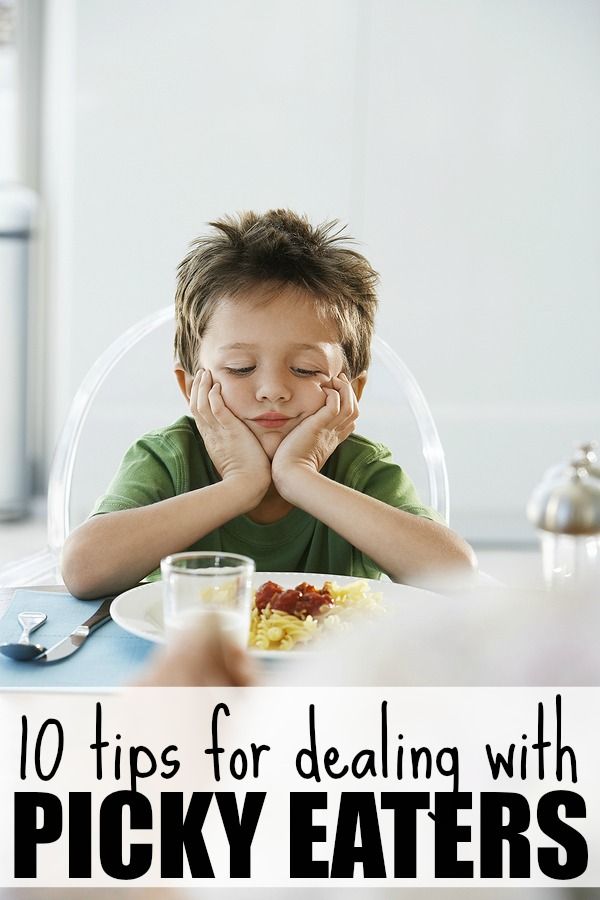 Strange, I think, chocolate for breakfast.Nearby was a girl who, in front of my astonished eyes, built herself such a Danish chocolate sandwich. I, stupid, asked her directly: “What are you doing?” She didn’t even understand the question ...
Strange, I think, chocolate for breakfast.Nearby was a girl who, in front of my astonished eyes, built herself such a Danish chocolate sandwich. I, stupid, asked her directly: “What are you doing?” She didn’t even understand the question ...
I then shared my impressions with my Russian girlfriends for a long time :-).
Let's go back to a 7-year-old girl. This is how the girl eats. Buns with chocolate. For dinner, however, she recognizes other food. From a series of pasta, pizza and McDonald's. True, her constitution is such that no matter how much she eats, she is very thin. Therefore, I do not think that parents are worried about this. But it's not just about thinness. Even if we forget that she often gets sick, one cannot but remember the main thing: after all, right now a person is FORMING!
My daughter's other friend. There is only pasta, lasagna, pizza and sandwiches.
| What parents can't think of! |
And everything should be WITHOUT tomatoes, cucumbers, lettuce, any vegetables at all, except for carrots….
You can list for a long time what exactly she DOES NOT eat. It's easier to make a list of 10 foods she recognizes. When she dine with us, when she sees other ingredients not on her pasta list, she just doesn't eat at all. Immediately, without trying, he says "I won't."
When my daughter eats at her place, there is no need to even ask what they had for dinner. Everything is as always: options from the list with 10 ingredients. At the same time, mom is trying. But at home there is also a father and an older sister. So they eat pasta mixed with pizza every other day. She also has sandwiches with only 1 type of sausage, only carrots and cucumbers are recognized from vegetables. And so for 3 (!!!) years out of her 7.
She wasn't friends with my daughter then.
Before all these stories, I was terribly worried that my Masha didn't eat spinach and onions…
But after my last birthday, I realized that my struggle was not in vain. I can still quite accept when the child does not eat some vegetables. But at my birthday I was simply shocked: “I don’t like such cakes, I don’t like this cream, but your milk is not like that, and I don’t like red compote, I don’t eat such rolls, and your butter is wrong, chocolate cake — fu…….”
But at my birthday I was simply shocked: “I don’t like such cakes, I don’t like this cream, but your milk is not like that, and I don’t like red compote, I don’t eat such rolls, and your butter is wrong, chocolate cake — fu…….”
You can continue the topic of how to feed a child endlessly!!!
At the same time, these phrases were not heard from 1-2 girls out of 15. Those who ate more or less WITHOUT nit-picking were at most 5-6 people. After that birthday, I realized that I just need to be happy. Let my daughter not eat, as I did in childhood, radishes and cauliflower, as well as all other vegetables, but she is well done. And without undue modesty I will say - this is still my merit. Just like picky children - the merit of their parents, who allow them all this.
(Now Masha already eats radishes and even broccoli. And she is very proud of herself at the same time :-) Of course, there are vegetables that she does not like. I don't force her now. )
| Picky Kids Epidemic |
Looking at all these many little picks, I come to the conclusion that
in our world is just some kind of epidemic of child indulgence.

At least in food. A bunch of parents who eat pasta and pizza every day. Already, almost no restaurant has a normal children's menu: only french fries, pasta, and further along the familiar list. Many children do not recognize any drinks other than soda and juice. Moms who cook 2 or even 3 dinners every night. You can go on for a long time. Unfortunately.
But maybe we should stop regretting and start acting? Stop being afraid to say "no" to your children? Stop making them little “kings and princesses”?
How?
If you are interested, I share my experience.
Something of my own, intuitive. Something read from smart books. One of them is just on this topic, I recently read: "French children do not spit food," by Pamela Drukreman.
So what exactly did I do to ensure that my children eat normal food?
Here are my rules for feeding a child:
Children should eat the same food as adults.
No baby food. My husband recently said to me: “We have Masha so thin! It's because you barely cook her favorite meals." When I asked what kind of dishes they were, he replied: “French fries, pasta and more ...” (see the list above or look at the children's menu of a nearby restaurant.) So, I told him that I was not going to the next 10 - 15 years of eating "children's meals" just because I have children in my house. Moreover, the weight and height of our children are simply in an excellent ratio :-).
My husband recently said to me: “We have Masha so thin! It's because you barely cook her favorite meals." When I asked what kind of dishes they were, he replied: “French fries, pasta and more ...” (see the list above or look at the children's menu of a nearby restaurant.) So, I told him that I was not going to the next 10 - 15 years of eating "children's meals" just because I have children in my house. Moreover, the weight and height of our children are simply in an excellent ratio :-).
| Eat better together |
No double dinners or lunches.
Once a week, my eldest 6-year-old daughter voices her wishes for the menu. I try to take them into account as much as possible. And so, our menu is from a series of fish dishes 2 times a week, 1 day WITHOUT animal proteins, and on other days - a mix of the remaining food options. While everyone is alive:-)
If someone doesn't like something, or someone doesn't like some ingredient, then it's not necessary to eat it. You can choose and set aside on the edge of the plate. But! It is MANDATORY to try. A small piece, but a must. If it is very tasteless, then I allow you to spit it back. And so every time. At the same time, I put ALL the ingredients from the dish on the plate. If you don't like it, try it and put it aside.
You can choose and set aside on the edge of the plate. But! It is MANDATORY to try. A small piece, but a must. If it is very tasteless, then I allow you to spit it back. And so every time. At the same time, I put ALL the ingredients from the dish on the plate. If you don't like it, try it and put it aside.
I make sure that children eat first and then drink. Otherwise, they fill their stomach with liquid, and then leave the table hungry. And they will start begging for pieces...
If possible, I do not allow children to bite before dinner.
If there are 2 hours before dinner, then you can eat something healthy, such as fruit or vegetables, sometimes cheese. If dinner is in 30-60 minutes, then let them endure. They won't die of hunger:-)
If a child says that he doesn't like food and won't eat, I don't force him.
If you don't like it, don't eat it. But I won't run to the fridge to offer everything I can. It’s my husband who loves to feel sorry for them (and they are well aware of this - from whom to ask for pieces :-). Oh, how poor they will go to bed hungry! Yes, they lie down. Today they will lie down, and tomorrow they will understand that it is better not to do this a second time. Finally! A person can survive for 30 days without food! And because of one missed dinner, obviously nothing will happen.
It’s my husband who loves to feel sorry for them (and they are well aware of this - from whom to ask for pieces :-). Oh, how poor they will go to bed hungry! Yes, they lie down. Today they will lie down, and tomorrow they will understand that it is better not to do this a second time. Finally! A person can survive for 30 days without food! And because of one missed dinner, obviously nothing will happen.
If only parents were so concerned that their children drink water! Without which, by the way, a person cannot live more than 3 days. So calmly, dear parents. No need to panic. In the end, when the child is REALLY hungry, then the stale crust of bread will come off.
Encourage your child to try everything many times.
Only after at least 10 times (!) the child will get used to the taste. And, as a rule, after that he will eat it all with pleasure.
Don't overdo it.
Everyone has periods when they want only tomatoes or only cucumbers. Then it usually changes. Let him eat handfuls of these tomatoes. Children's body (not spoiled) knows what it needs. But! Don't forget to make sure that all the other foods on the plate have been tried. If a child has GENERALLY only tomatoes with bread or rolls with chocolate on the menu, then this is already pampering and parental oversight. We draw conclusions quickly and change the situation.
Then it usually changes. Let him eat handfuls of these tomatoes. Children's body (not spoiled) knows what it needs. But! Don't forget to make sure that all the other foods on the plate have been tried. If a child has GENERALLY only tomatoes with bread or rolls with chocolate on the menu, then this is already pampering and parental oversight. We draw conclusions quickly and change the situation.
As simple or complex as it may sound, I want to add an important thing .
Of course, it's never too late to start.
But it is logical not to bring the situation to the point of absurdity , when a 12-year-old child controls you and eats only carbonara pasta... It will already be difficult here. It's best to start as early as possible. Better yet, right away. And you don’t have to decide for the child in advance: children definitely won’t eat olives and artichokes ... How soon they will! My youngest eats both. He does not like pepper, but he will eat olives at least with a spoon.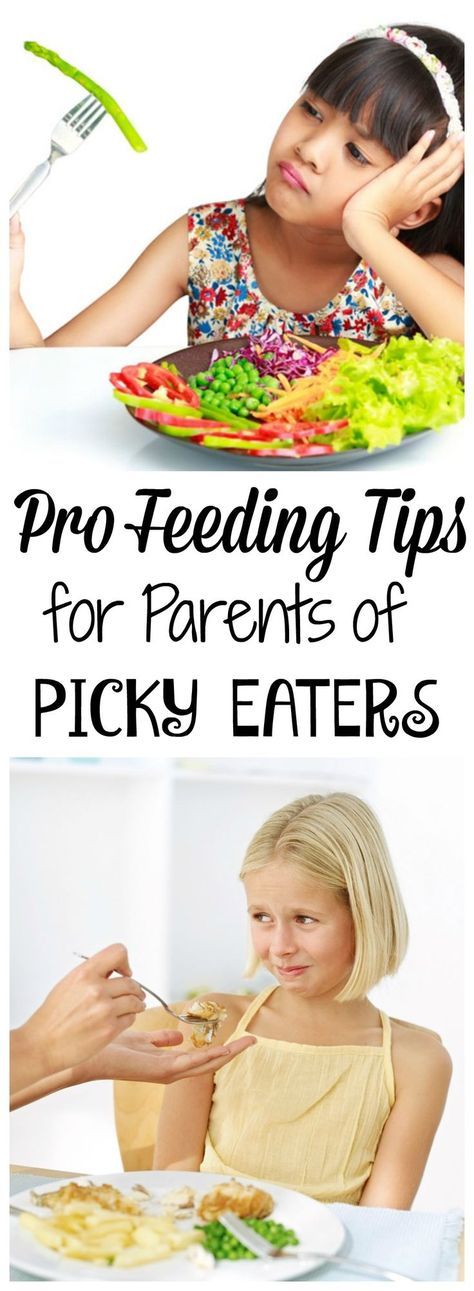
| Introduce new products gradually to children |
Another secret: don't rush to cook complex dishes with 20 ingredients right away, if you usually have macaroni and cheese. Innovate gradually. Put in the tomatoes first, then the meat and basil, then boil the rice. And then on the rise. From extreme to extreme is always a path to failure.
And at the very end I want to add: even though everything here sounds smart and correct, everything happens in our family. And dad, who after dinner feeds the children with pieces of cheese, and compote instead of dinner, and catching favorite ingredients from the dish.
There are no ideal children and parents.
But the main thing is to know where you are going, to be firm in your intentions, and not to forget about them. Believe me, in the end it will be easier for you and your children.












